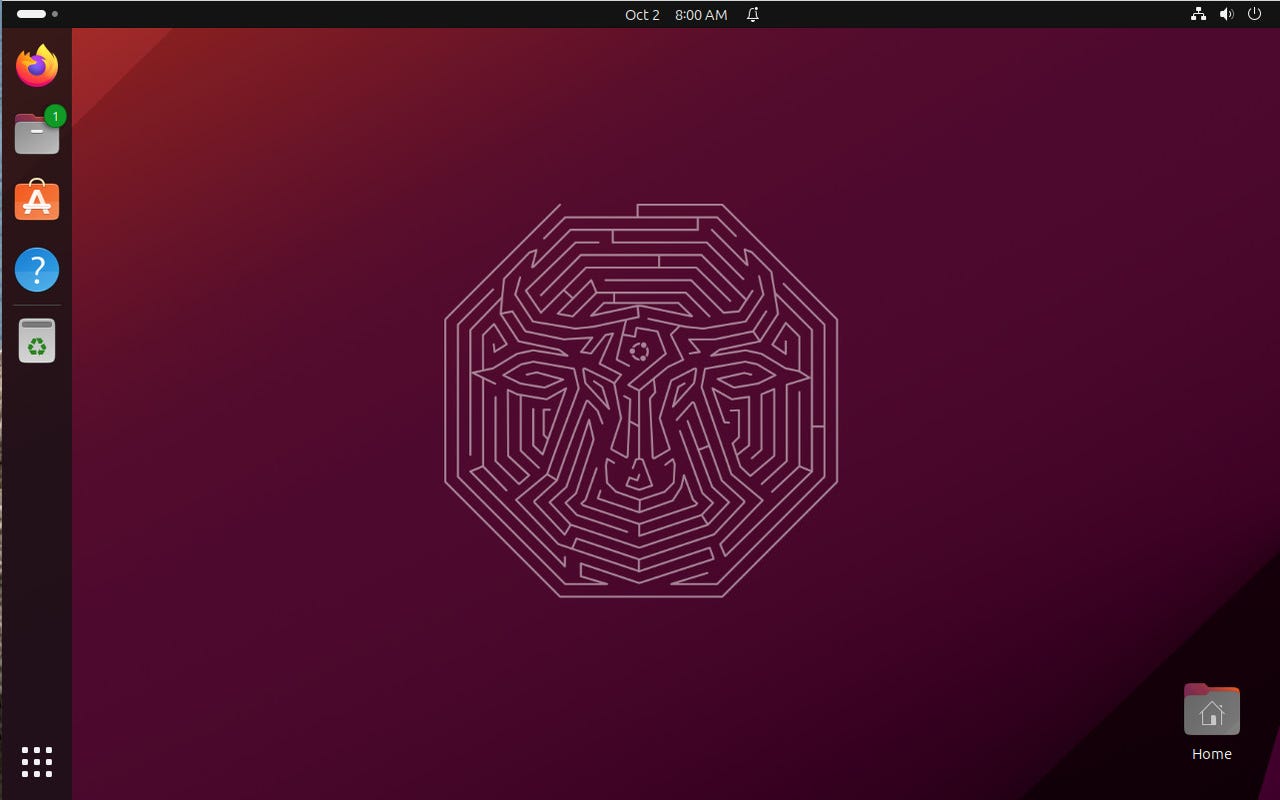
Ubuntu Mantic Minataur shows off a desktop that looks only slightly different than previous releases. Jack Wallen/ZDNET
I’ve been a fan of Ubuntu for a very long time. And although straight-up Ubuntu isn’t my desktop of choice (that honor belongs to Ubuntu Budgie), I’ve always found Canonical’s distribution to be one I highly respected and wouldn’t hesitate to suggest for users of all skill levels.
Also: Which Ubuntu flavor is best suited for you?
Over the years, I’ve grown accustomed to the small steps taken by Canonical with Ubuntu. Its releases aren’t exactly splashy but they certainly are reliable. So, when I downloaded the daily build of Ubuntu 23.10, I expected the usual “boring” upgrade.
I was both validated and surprised.
On the surface, Ubuntu 23.10 seems more of the same. Ubuntu looks and feels like the Ubuntu I’ve been experiencing for the past few years. However, when you start digging in, you realize there’s more than meets the eye.
Flutter by, you butterfly
The first thing of note is that the Ubuntu app store has been completely rewritten in the Flutter language. This new take on the app store offers a much better (and faster) search, an improved app view, the ability to easily switch between available Snap versions.
Installing Slack from the new app store is as simple as it gets. Jack Wallen/ZDNET
This new app store is a huge improvement over the sluggish, unreliable option from previous releases.
Major changes to PPAs
For those that do work with PPAs (for the installation of third-party software), you’ll discover that how PPAs are managed is a far cry from the way it was. All PPAs are now managed via source files that follow the deb822-format. Canonical went this route to heighten security by preventing GPG keys for any given repository to be installed system wide. By doing this, a PPA listing is no longer capable of hitching a ride on another listing’s GPG key.
This change will trip up a lot of people at first (at least those who manually add PPAs to their system) but the change is worth the added security.
Updated software
The list of updated software is, as usual, fairly lengthy. However there are a few particular pieces that are more important than others.
For example, Ubuntu 23.10 will ship with Linux kernel 6.5, which adds support (or enhanced support) for a number of new technologies, such as MIDI 2.0, Rust, ACPI on RISC-V, Loongarch architecture, Intel’s Topology Aware Register and PM Capsule interface (for much-improved power management), and more. Of course, the 6.5 kernel also includes the usual security patches, bug fixes, and performance enhancements.
Also: The best Linux laptops right now
As well, Ubuntu 23.10 is set to ship with GNOME 45, which offers a ton of new features, including:
- New default apps (such as new webcam and image viewing apps).
- A return to the previous terminal application.
- Fractional scaling improvements.
- A new Activities button/indicator
- A much faster search (within the Application Overview).
- Camera usage indicator.
- New Style applications.
- Numerous improvements to the file manager.
Enhanced tiling
Finally, Ubuntu 23.10 gets a boost to the desktop, by way of enhanced tiling. Essentially, tiling makes it easier to place windows on your desktop, such that you can have numerous windows open, each of which will take up a portion of your screen. This makes it very easy to multitask while keeping all of the windows you need open on your desktop. You can learn more about tiling windows here.
You can enable or disable the new tiling feature in Ubuntu. Jack Wallen/ZDNET
Ubuntu adds this enhanced tiling by way of a GNOME extension that’s been baked in. Within the Ubuntu Desktop section of the Settings app, you’ll find the Enhanced Tiling section, where you can enable/disable the feature and also enable/disable the Tiling Popup (which provides a list of open apps to tile) and Tile Groups (which allows you to add apps to groups, so they’ll behave similarly when tiled).
For anyone who likes the idea of a tiling window manager but doesn’t want to go all-in, this is an outstanding option.
The official release
Ubuntu 23.10 will be officially released on October 12, 2023. For those who can’t wait for that date, you can always download the daily build to test it out. I wouldn’t recommend the daily build for a production machine, but it will give you an idea of what you’re in for when the full release is available.




















